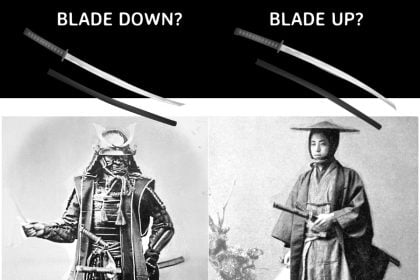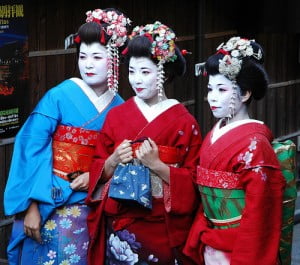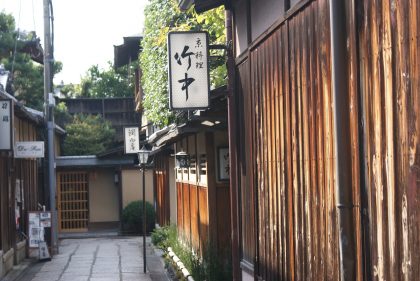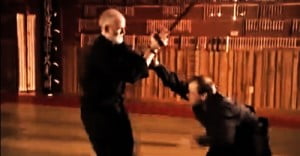Tokyo Extra recently did a Japanese ninja special, which features Seiryukutsu Narashino of the Musashi Clan Ninja Warriors.
Not only is it filled with ninja facts, but it talks about places in Japan where you can experience being a shinobi.
No time to watch this video? Read the essentials below.
Ninja Questions & Answers

Throughout the show, the word “ninja” is used loosely. Where it originally refers to feudal Japanese warriors who engaged in espionage, Tokyo Extra uses “ninja” to refer to the pop culture stereotype and even blood descendants of the Japanese ninja.
The following questions were posed to Narashino. I have left out irrelevant questions. And I have added some of my comments in italics.
1. Are ninjas still working as secret spies?
No. Today’s society is a lot more peaceful. There’s no need for spies.
However, Narashino’s friends (presumably from Musashi) are working as corporate spies.
Actually, spies are still relevant in warfare today. What Narashino means is that modern Japanese society isn’t as chaotic as the Sengoku period. And the ninja’s role was highly dependent on feudal warfare. Spies today gather intelligence on a global level.
You can read more about whether the Japanese ninja exist, with actual historical proof here.
2. Have you ever killed someone?
No. It depends on the area in Japan, but ninja were not meant to be assassins.
They were not fighters. Their job was to gather information.
But several hundred years ago, there were ninja assassins. Now, “ninjas” are promoting peace.
Ninjutsu was indeed NOT a martial art but a system of espionage and subterfuge. Also, there’s a difference between ninja between Sengoku (chaos and war) and Edo period (peacetime). This is why Narashino mentions that ninja may have been involved in assassinations several hundred years ago.
3. Are ninja clothes ever purple?
The ninja never wore purple.
But they wore dark blue. This is because the traditional method of dyeing garments meant blue was common back then. Purple was a difficult colour to dye.
Since ninja needed to blend in with the crowd, adopting common attire and colours would have been a key strategy to stay hidden in plain sight.
4. Are you strong?
Ninjas were not made for combat. But they had the strength of survival.
Narashino presumed that the person who asked the question meant “strong in combat”. His answer acknowledges that while ninja could fight, their martial arts were probably not any more superior than the average warrior. What they had was perseverance and determination to survive.
5. Why did ninjas cover their mouths?
Ninja hid their mouths to hide their intentions.
There is much to glean from seeing a person’s mouth (in terms of body language). Ninja wore masks to avoid revealing their next move.
It is unlikely that ninja wore masks in regular life when attempting to blend in with commoners. Narashino likely referred to Japanese ninja who did night missions that did not rely on an alias.
6. Do you believe that ninja and samurai are sworn enemies?
Being ninja was a job. There were ninja among samurai.
There were even shinobi who were farmers and dancers. Anyone could be a ninja.
This is a fact – that many ninja were samurai. What’s debatable, is whether people of any social class could be a ninja. Narashino could have meant people in long-term disguise (e.g. dancer).
7. What are the requirements to be a ninja?
You need to study about being a ninja. Anyone can be a ninja. Find the main aspects of being a ninja and be true to it.
Narashino is aware that ninja as a profession no longer exist. His intentions here is to preserve history and culture, by having people live the main aspects of the ninja’s philosophy.
8. Can you catch an arrow in flight?
He has never practiced with catching arrows before.
But he can catch shuriken (ninja star).
Being trained in it, doesn’t mean it was practical to catch shuriken though.
9. How much training do you have to compete to become a ninja?
Daily training. It’s like a mindset and philosophy. It includes posture and eating correctly.
This is similar to traditional martial arts – you live the philosophy in daily life.
10. How many ninja clans still exist? Do some exist outside of Japan?
If you include people who are promoting the culture and techniques, there would be 15 clans.
There are some abroad. But they may not be legitimate. So, you need to be wary and check.
Japanese Ninja Skills & Tools
These are some skills, tools and training demonstrated in the show.
Voice percussion

The ninja were able to imitate instruments with their voices. Narashino demonstrated this skill twice and explained that the shinobi used it as an ice-breaker with strangers. They would make friends with locals, who would then become a source of information or protection.
Though not confirmed, it was mentioned that the conch shell instrument was used to summon members and for spiritual purification. Voice percussion may have also aided in this, or tricking opponents who used such a call.
Caltrops
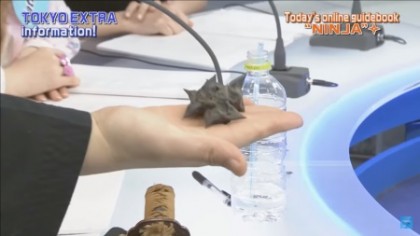
Caltrops were used to slow down pursuers. And back then, they were actually a type of plant called the Water Chestnut (or Water Caltrop). There was no need to cut them; they are naturally in that shape.
Shuriken
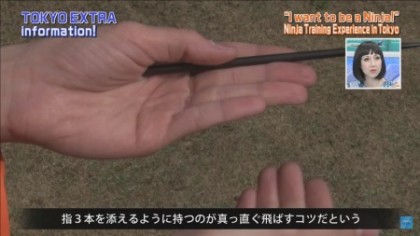
Shuriken was said to be among the main tools of the shinobi. Stick shuriken, in particular was most difficult to master. It only flies straight when you hold three fingers straight together.
Fukiya (Blowgun)
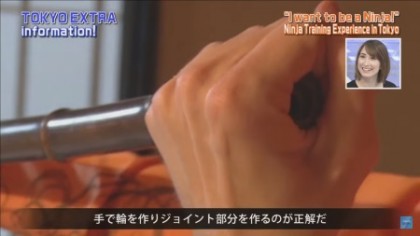
Fukiya is a blowgun that shoots out poisonous darts. Precaution must be taken to avoid touching the poison when blowing. You do this by clenching your fist over the blowing end to blow through through your hand.
Mountain Trekking
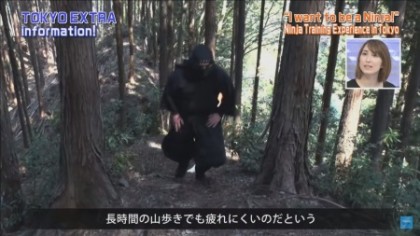
According to the master, move the same arm and leg together to reduce fatigue when going uphill. It seems to help with balance in the video.
Kushigoshinbo
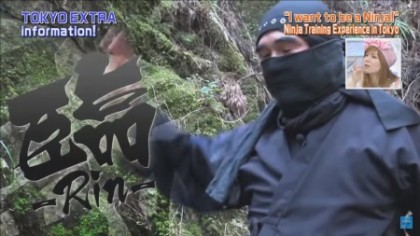
Kushigoshinbo are arm movements, similar to kuji in and kuji kiri, that helps the ninja enhance concentration.
To perform Kushigoshinbo, cut the air four times vertically and five times horizontally while chanting one character with each stroke.
Using your right arm, do the following.

Rin – move arm left to right
Pyo – move arm up to down
Tou – move arm left to right
Sha – move arm up to down
Kai – move arm left to right
Jin – move arm up to down
Retsu – move arm left to right
Zai – move arm up to down
Zen – move arm left to right
Then extend two fingers on each hand. The right represents katana; the left represents its scabbard. Place the “katana” hand in the “sheathe” hand – left encasing right.
About the Ninja Special, Tokyo Extra & Musashi Clan
Please note that the ninja information compiled are from the show, and that I do not guarantee historical accuracy. Also, to learn about other ninja facts and travel destinations, watch the video above. I have omitted a lot of information.
If you would like to travel to Japan and love to learn more about the culture, subscribe to Tokyo Extra on YouTube. The show’s content is crowd-sourced live. So, you can send in questions and have them answered during which. The hosts are foreigners who currently live in Japan.
As for the Musashi Clan, they are said to have established the onmitsu (undercover spies) for the Tokugawa government during the Edo period. Today, the clan dojo serves as a historical Japanese ninja experience, training and entertainment destination in Japan. Check out their site.

